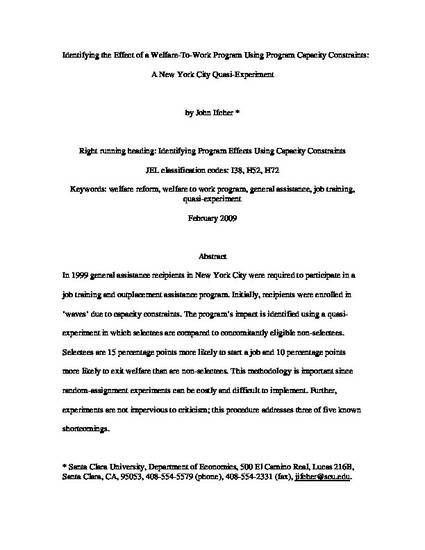
Article
Identifying the Effect of a Welfare-to-Work Program Using Capacity Constraint: a New York City Quasi-Experinmet
Economics
Document Type
Article
Publication Date
6-1-2010
Publisher
Palgrave Macmillan
Disciplines
Abstract
In 1999 general assistance recipients in New York City were required to participate in a job training and outplacement assistance program. Initially, recipients were enrolled in ‘waves’ due to capacity constraints. The program’s impact is identified using a quasiexperiment in which selectees are compared to concomitantly eligible non-selectees. Selectees are 15 percentage points more likely to start a job and 10 percentage points more likely to exit welfare than are non-selectees. This methodology is important since random-assignment experiments can be costly and difficult to implement. Further, experiments are not impervious to criticism; this procedure addresses three of five known shortcomings.
Citation Information
Ifcher, J. (2010). Identifying the Effect of a Welfare-To-Work Program Using Program Capacity Constraints: A New York City Quasi-Experiment. Eastern Economic Journal, 36(3), 299–316.

This is a post-peer-review, pre-copyedit version of an article published in Eastern Economic Journal. The definitive publisher-authenticated version Ifcher, J. (2010). Identifying the Effect of a Welfare-To-Work Program Using Program Capacity Constraints: A New York City Quasi-Experiment. Eastern Economic Journal, 36(3), 299–316 is available online at: http://doi.org/10.1057/eej.2009.11